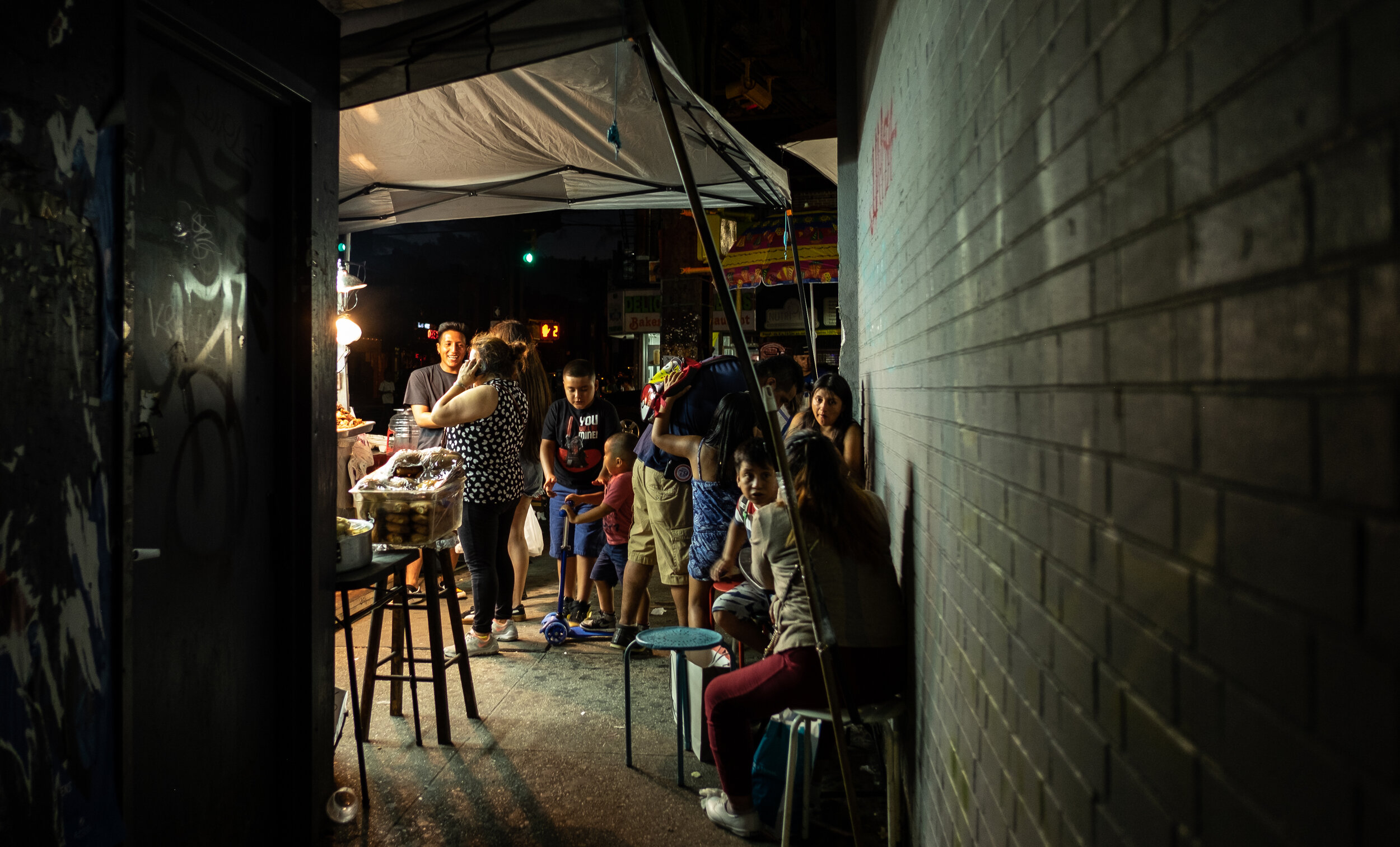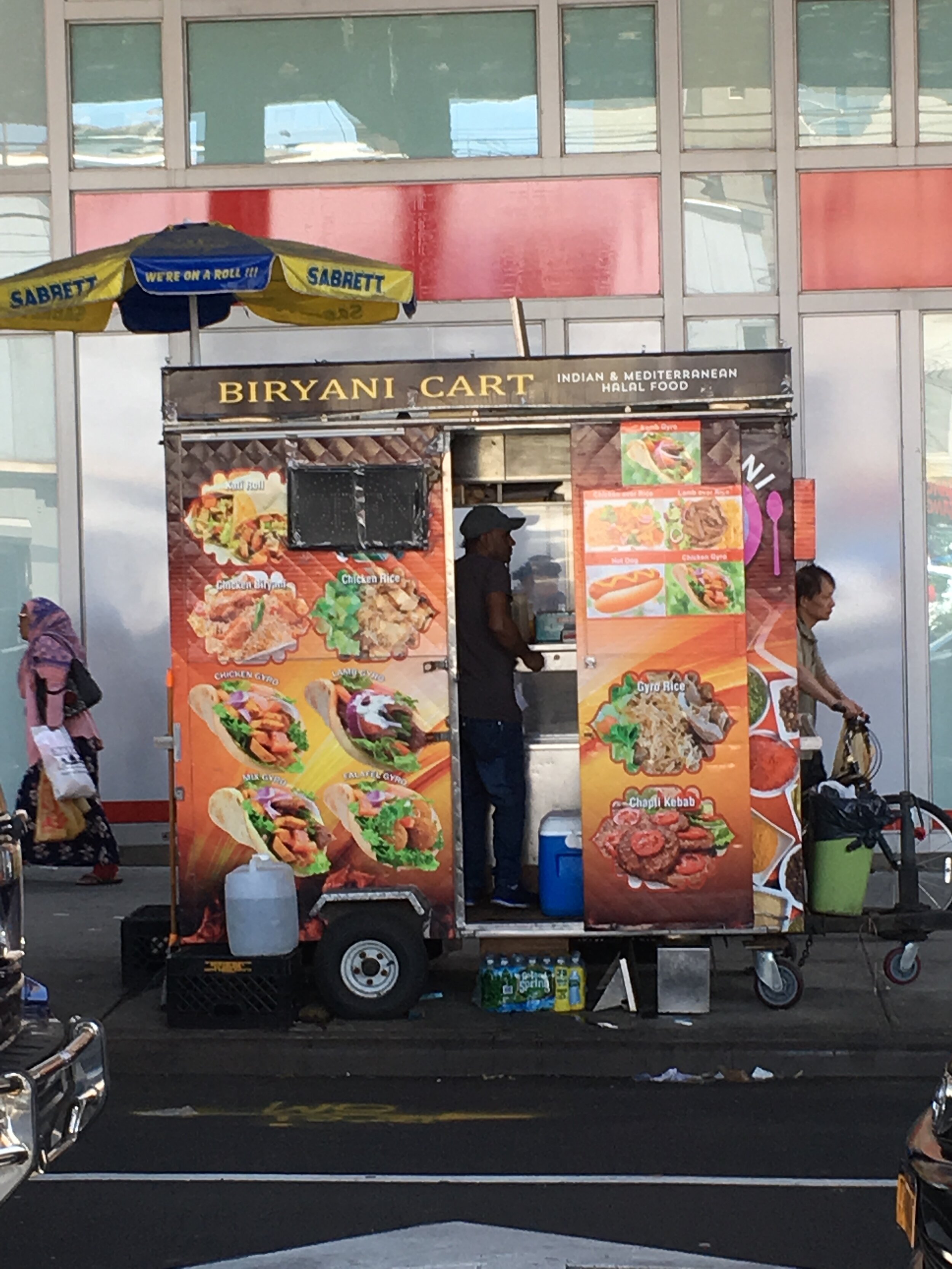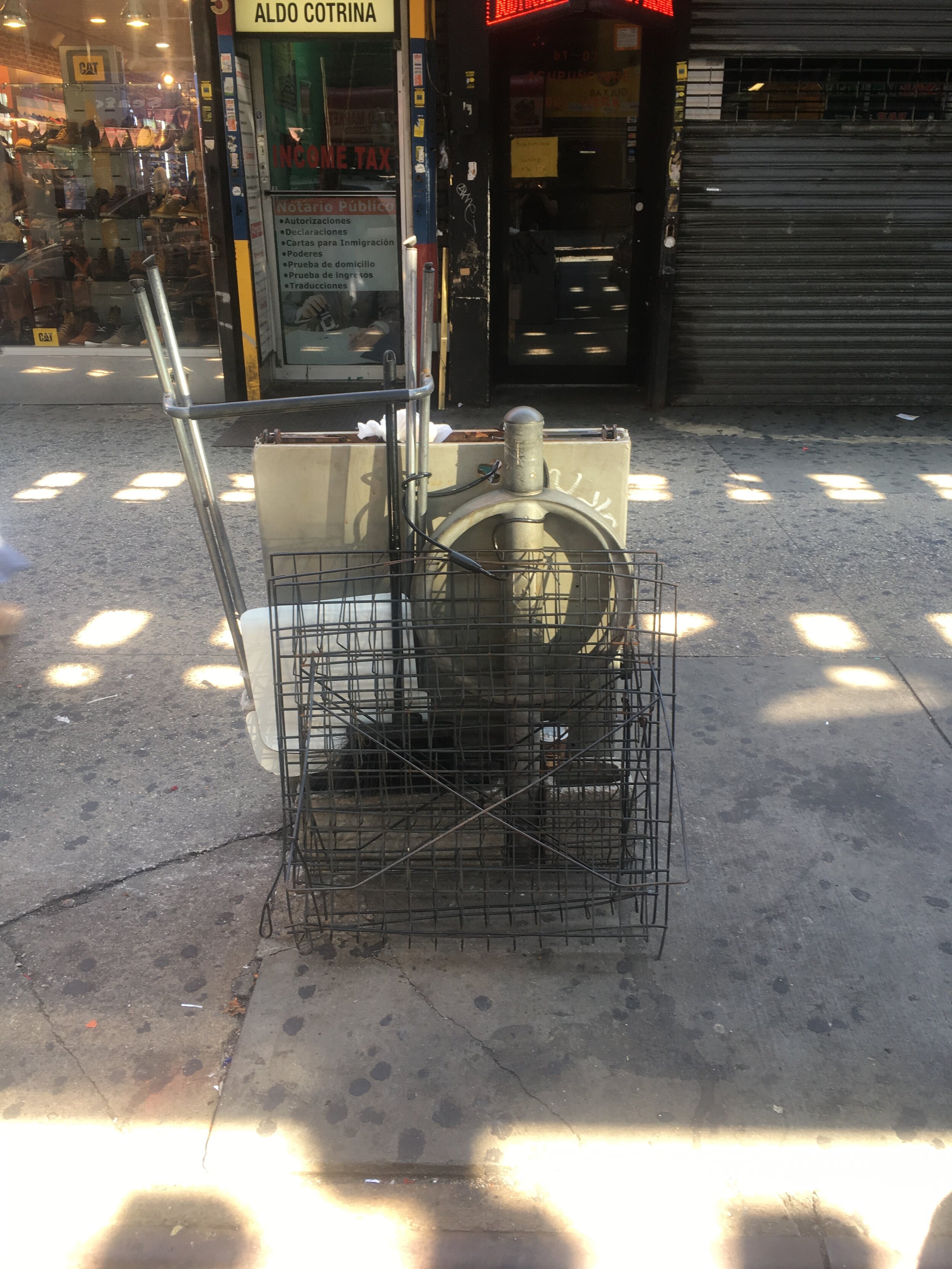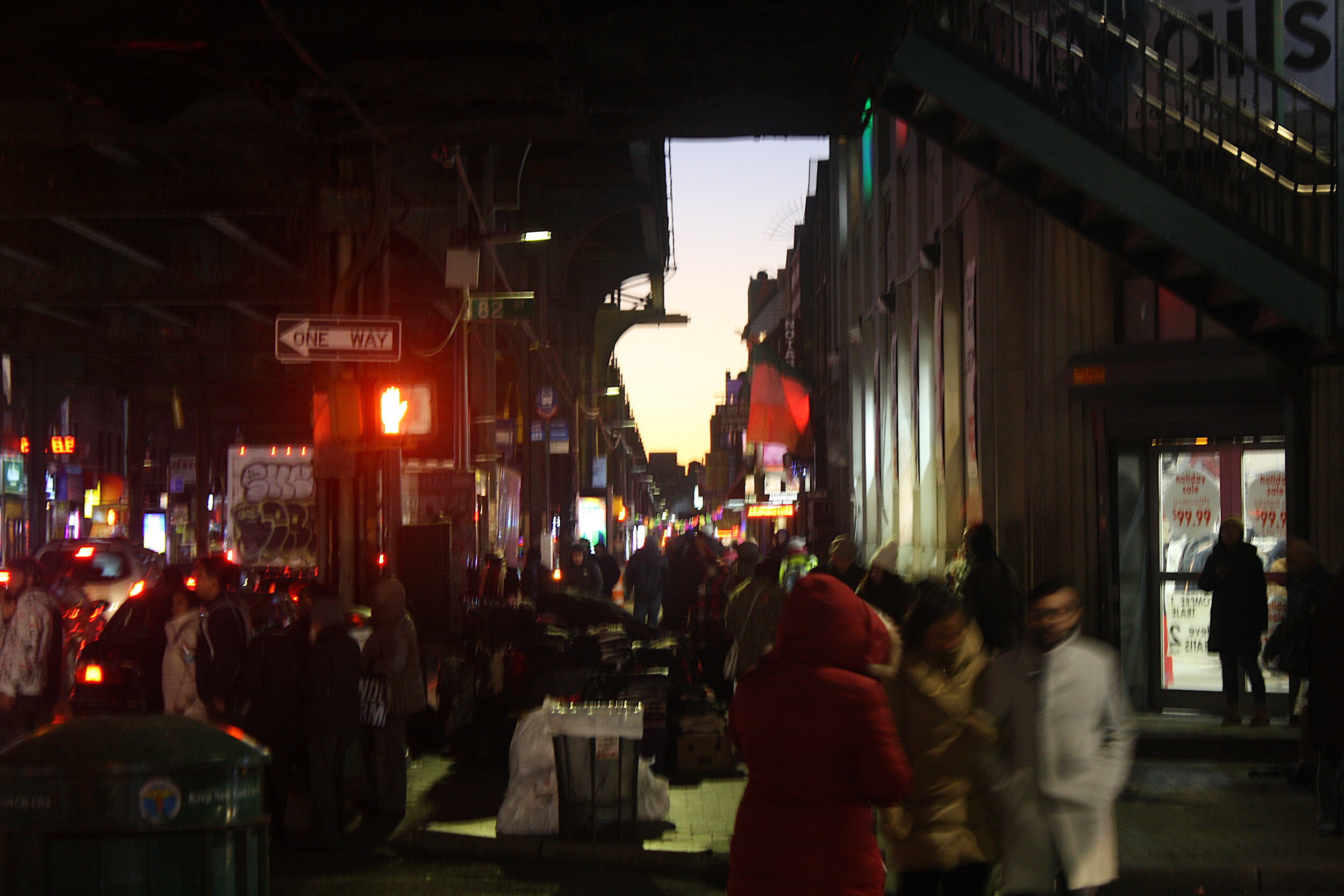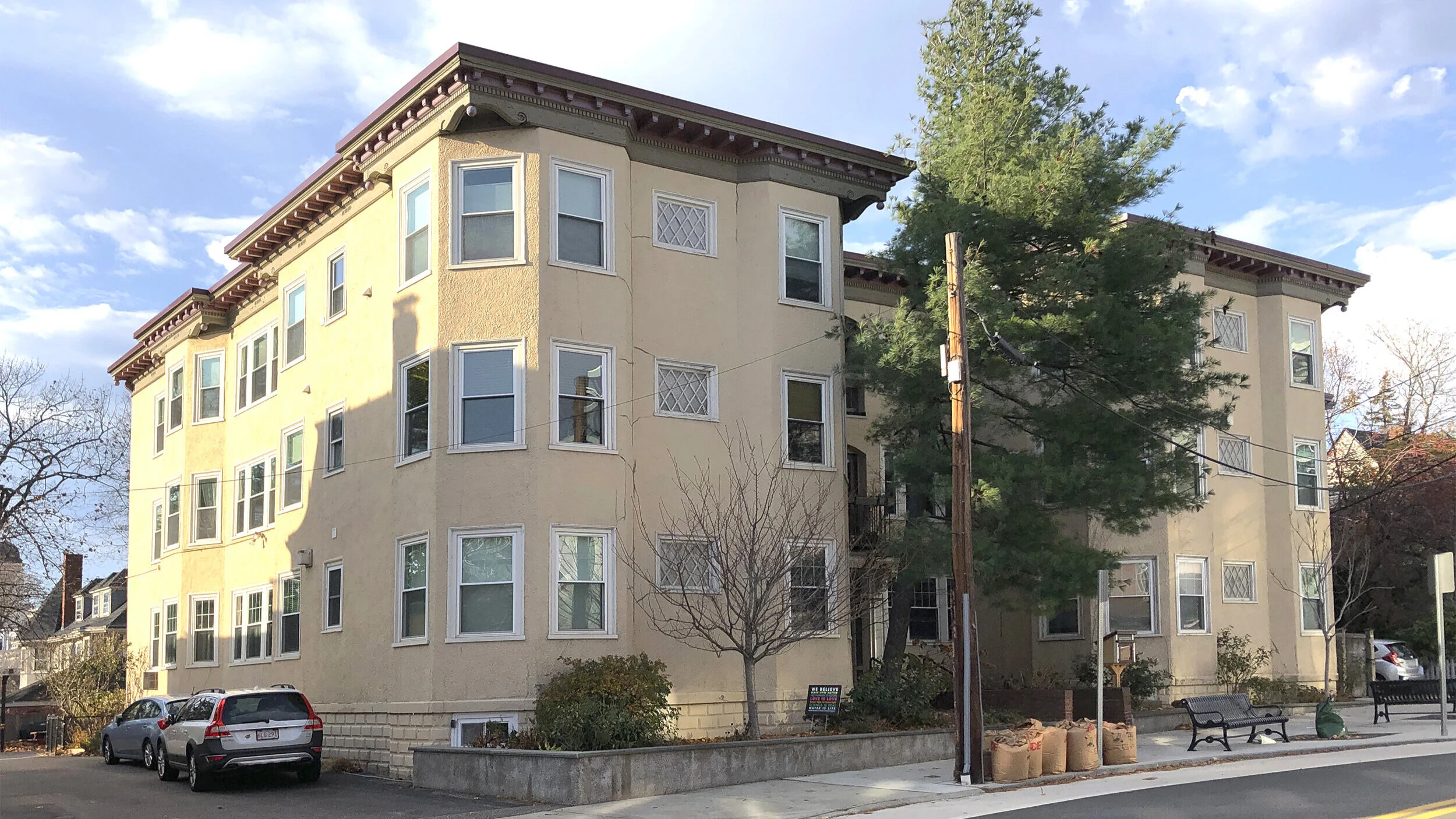Unpacking the Composition of a Multiethnic Streetscape in Queens, New York
Faint sounds of Cat Steven's “Wild World” echo from a portable speaker underneath the roaring trains clacking along the elevated tracks. A lone performer strums his guitar on a sidewalk as people stumble out of the nightclubs that line Roosevelt Avenue. After hours of dancing and socializing, they group around stainless-steel carts that line the street to order tacos, burritos, sopas, huaraches, and arepas. From steaming carts come the sounds of sizzling meat and chopping, along with the fragrance of burned chilies, onions, and toil. Once they’ve been served, customers stand around eating off of paper plates, aluminum foil, or from (illicit) Styrofoam containers. Some vendors have permits; some work outside the law.
At 4:00 am, closing time for bars, these street activities only hint at the rich and varied rhythms of Roosevelt Avenue’s multiethnic landscape in northwestern Queens. This photo essay explores more of them, with focus on the sections in Woodside, Elmhurst, and Jackson Heights, between 65th and 90th Streets.
Geographers, urbanists, and others have long studied everyday streetscapes like Roosevelt Avenue because they are the places where ordinary people project their values onto the Earth's surface. Most focus on fixed elements, like buildings. Here, by contrast, I also examine transient ones like food carts, and sensory ones like scent and sound, to better pick up the nuances of human life. Throughout, I employ “thick description,” a method of interpretation and analysis promoted by the eminent cultural anthropologist Clifford Geertz to make meaning of complex scenarios.
Cutting through the borough for 5.9 miles (nearly all beneath the No. 7 train's elevated tracks), Roosevelt Avenue emerges from Greenpoint Avenue just east of Queens Boulevard and terminates at Northern Boulevard in Murray Hill (Figure 1). At its western end, it bisects much of Woodside; east of the Brooklyn Queens Expressway (BQE), it divides Jackson Heights to the north and Elmhurst to the south.
While the road mostly follows a straight path, clashes between competing street grids generate a splintered corridor of dog-leg intersections and awkwardly shaped lots. Triangular traffic islands line the south side of the street (many with steel stanchions are anchored to support the elevated tracks). Entire blocks are comprised of buildings that are triangular or trapezoidal in plan.
The majority of the buildings are low-rise: one or two stories, with rooflines just below the elevated tracks (Figures 2 and 3). Simply designed, they are generic commercial and mixed-use structures, defined by rhythms of width, plate glass, and brick ornamentation. The majority house family-owned and operated businesses, many related to food, including restaurants, supermarkets, greengrocers, specialty stores, cafes, bars, and bodegas (Figures 4 and 5). These operate alongside a variety of other shops, entertainment spots, houses of worship, educational institutions, and small offices for health and professional services.
Visually, the streetscape is dominated by signage and advertising in Spanish, Bengali, and more. Some are mounted directly onto buildings or applied to storefront awnings. Ranging in colors, materials, sizes, and languages, these displays often obscure architectural features (Figures 6 and 7). Xeroxed flyers with phone numbers on loose tabs advertise rooms for rent or work, or (as in any neighborhood) announce lost pets (Figures 8 and 9). Posters taped to storefront windows promote bars and clubs. Dry-erase white boards advertise day laborers (Figure 10). Sandwich boards with menus line the sidewalks, near where hired hands pass out handbills for new restaurants, massage parlors, and beauty salons.
The atmosphere is improvisational, vibrant, and seemingly chaotic and messy. In part, this is because of all the movement. The No. 7 trains convey thousands of people above. The roadbed is crammed with cyclists, cars, buses, and big rigs. And pedestrians crisscross sidewalks between the street and storefronts. There are also many “informal” activities like street vending, especially in the interstices (Figures 11 and 12). Even the “formal” or permanent streetscape reflects this energy and intensity. In many New York City neighborhoods (as in cities worldwide), e-commerce brought a plague of empty storefronts in the 2010s. Not on Roosevelt Avenue. Here it is common for multiple proprietors, some literally spilling out onto the street, to share a single storefront (Figure 13).
The corridor's aromas and sounds—proselytizers shouting in Spanish, brick-and-mortar proprietors hollering their best deals of the day, portable speakers blaring Banda—reveal the many different groups living and working in this part of Queens, one of America's most diverse urban areas (Figure 14). They also suggest the precarity of many. Customers may not notice which vendors are licensed, that the sound of meat chopping against metal griddles comes from carts displaying municipal permits (Figures 15 and 16). But the careful observer will notice that the bells ringing between the thundering roar of the train are distinctive of unlicensed vendors selling ice cream, tamales, and chuzos.
Day and night, Roosevelt Avenue hosts a staggering variety of activities, filling people’s needs, desires, moods, and idiosyncrasies in a complex interplay of formal/informal, legal/illegal, and local/global. Everywhere, vendors sell not just snacks but fruit, clothes, books, CDs, DVDs, jewelry, and tchotchkes, on fold-up tables and plastic crates (Figures 17 and 18). (When not in use, these materials are commonly found locked to bike racks along the thoroughfare.) Parked cars serve as mobile workshops, with men repairing shoes and belts in back seats (Figures 19 and 20). While the streetscape is its built environment, it is also the impermanent practices and uses that these photographs capture: eating, shopping, working, walking, and socializing (Figure 21).
Postscript: Fieldwork for this article was undertaken in 2017 and 2018. Like much of New York City, Roosevelt Avenue all but shut down in March 2020 with the arrival of the novel coronavirus. At the time of this writing, the corridor is slowly coming back to life nearly a year later. While some brick and mortar businesses have shuttered permanently, others have taken advantage of street conditions and customs to temporarily operate on sidewalks, while the scene has been enlivened by many who lost other kinds of jobs and took up street vending for the first time.
Author’s note: The author wishes to thank Melissa De la Cruz, who accompanied him while conducting some of his fieldwork, and who took many of the photographs presented in this essay, at the author’s request.










